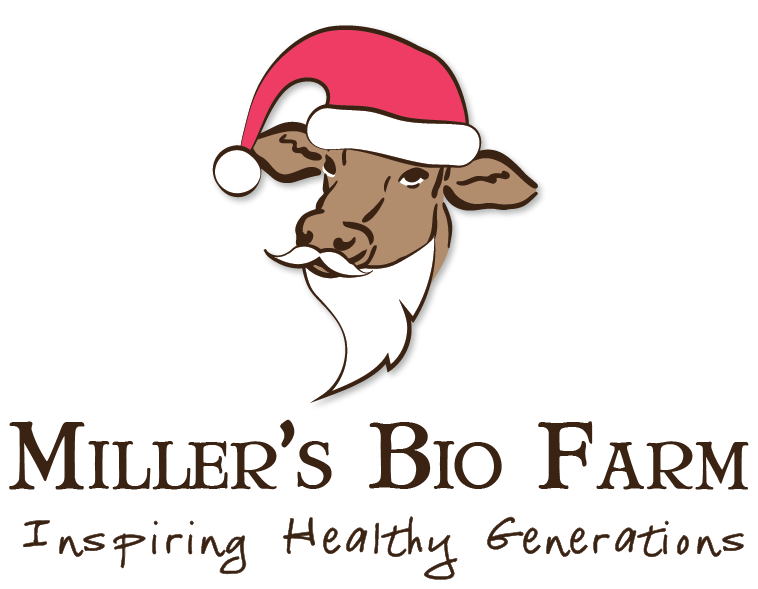Methane from certain cows is a threat, not cows raised on good soil.
posted on
September 8, 2023

Oh, climate change. It's a buzz word everywhere and a hot topic of our next presidential election. Whether you believe in climate change or not, we all need to be educated on the issue, because we need to be able to talk about it and figure out a way forward.
Today, I want to focus on a very small part of this conversation: methane, the biggest reason climate change activists have for vilifying cows.
The theory of climate change says that heat-trapping "greenhouse" gases are bad for the planet. They blanket the earth and prevent it from cooling. And methane is the worst of them all. Compared to carbon dioxide, methane has 80x the warming power. Wow!
Research shows that at least one third of human-caused methane emissions come mostly from beef and dairy cattle. These ruminant animals produce methane as a natural part of digestion. Another wow! And side note: Other big sources of methane are landfills, pipelines, and other industrial operations.
But, contrary to what most climate activists say, the methane problem isn't about the cow itself, it's about how it's raised. As it's said, "It's the how, not the cow."
You see, 200 years ago, there were more grazing animals roaming freely on our planet than today. So, why is methane a problem now? It can't just be the cows and other ruminants. What changed? Well I can think of one big thing - how those animals live!
Enter Dr. Christine Jones into the conversation. Dr. Jones is a soil ecologist and active participant and supporter of the Australian movement into a Soil Carbon Accreditation Scheme.
Dr. Jones explains that most of the farmed cows are now kept in confined spaces and that this shift has significant consequences. Firstly, we're now using fossil fuels to grow their feed, which isn't great for the environment. Secondly and perhaps more importantly, keeping animals confined means they don't interact with helpful bacteria called methanotrophs. These little guys love eating methane.
Here's how it works in nature: When a cow munches on grass, any methane it releases gets immediately gobbled up by methanotrophs, keeping things in balance. But this is only true if the cow is on living soil. If a cow lives indoors or on concrete, that methane goes right into the atmosphere. This is where the problem lies.
Nature is amazing and always wants to keep to keep things in balance.
For example, termites also produce methane during digestion, but their resident methanotrophs help keep methane levels low around termite mounds, even lower than is normal in the air.
Another example is the awful Deepwater Horizon oil spill in the Gulf of Mexico. It released hundreds of thousands of tons of methane into the ocean. But here's the cool part: Methanotrophic bacteria populations exploded and devoured an estimated 220,000 tons of methane, helping restore normal levels.
The quality of the soil matters, too. The more naturally healthy the soil, the greater the methane capture.
Methane-munching methanotrophs are highest in soil that's naturally regenerated with manure and compost. So that means that our cows on our biodiverse pastures are likely methane neutral.
On the flip side, soil that's fertilized with mineral nitrogen fertilizers or other artificial fertilizers simply aren't as hospitable to methanotrophs.
So there you have it - cows and methane are linked. But, it's the farming practices that's to blame, not the cows alone.
What do you think? Do you make food choices based on its affect on the environment? Do you have an issue with cows ruining the world? What are your thoughts on climate change?
I’d love to hear from you. Comment below (no account required - start typing for the guest option to appear) or contact us.
Sources
- Interview: SOS: Save Our Soils — Dr. Christine Jones Explains the Life-Giving Link Between Carbon and Healthy Topsoil
- What’s the beef with cows and the climate crisis?
- Farmers, scientists seek solutions to global warming caused by cows
- Soil carbon - can it save agriculture’s bacon?
- A methanotrophic bacterium to enable methane removal for climate mitigation
- Development of an engineered methanotroph-based microbial platform for biocatalytic conversion of methane to phytohormone for sustainable agriculture
- Long-term effects of mineral versus organic fertilizers on activity and structure of the methanotrophic community in agricultural soils




